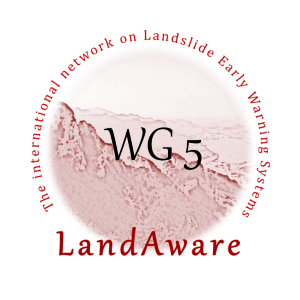
- Questo evento è passato.
LandAware WG5 meeting
Febbraio 3, 2023 @ 1:00 pm - 2:30 pm UTC+0

AGENDA
1) Welcome, wrap-up of what happened since our last meeting in Sept. 2022 (Manfred, Ben)
2) “Today’s innovation” presented by Yuri Gorokhovich (Lehman College, City University of New York):
Yuri has been working for quite some time with landslide prediction in Hurricane prone regions of Guatemala, Honduras and Puerto Rico taking into account wind speed and direction. He will discuss some of his results that her recently presented at AGU. And he will be available afterwards for questions and discussion.
Title of the presentation: Are We Getting Closer to Predicting Landslides in Hurricane Prone Regions in Real-Time?
Abstract: Landslide hazards in hurricane prone regions are tightly associated with their impact. Specifically, the distribution of water content in slopes, one of the main triggering landslide factors, has been studied by many researchers in relation to the wind driven rainfall (WDR), a phenomenon associated with cyclonic activity and its impact on topography (Pike and Sobieszczyk, 2008). Latest case study of Hurricane Maria impact on the landslide distribution in Puerto Rico (Gorokhovich and Voustianiouk, 2021) has supported Pike and Sobieszczyk conclusions by demonstrating a close association of the landslide distribution with slope orientation and hurricane impact from WDR. Previous research in Guatemala(Gorokhovich et al., 2016) confirmed similar association of WDR with landslide data from hurricanes Mitch and Stan. The results from multiple case studies in Caribbean region produced over the past six years can provide a basis for the real-time predictions of the landslide locations during hurricane events. We argue that existing large landslide databases from three countries (Guatemala, Honduras, Puerto Rico)and three hurricanes (Mitch, Stan, Maria) will supply enough data sets for predictive model calibration and verification. The proposed predictive model structure will include real-time hurricane monitoring data with a real-time spatial model of WDR distribution across the landscape. Combination of data and modeling components will result in mapping locations of slopes with relative WDR contribution to the soil moisture within the timing of hurricane advisories. Inclusion of the high-resolution satellite data on soil moisture in predictive model will add quantitative component to slope stability categorization.
3) News (related to innovations in LEWS) from the WG members.
4) Outlook 2023: planned continuation of the working group.
5) Varia and closure